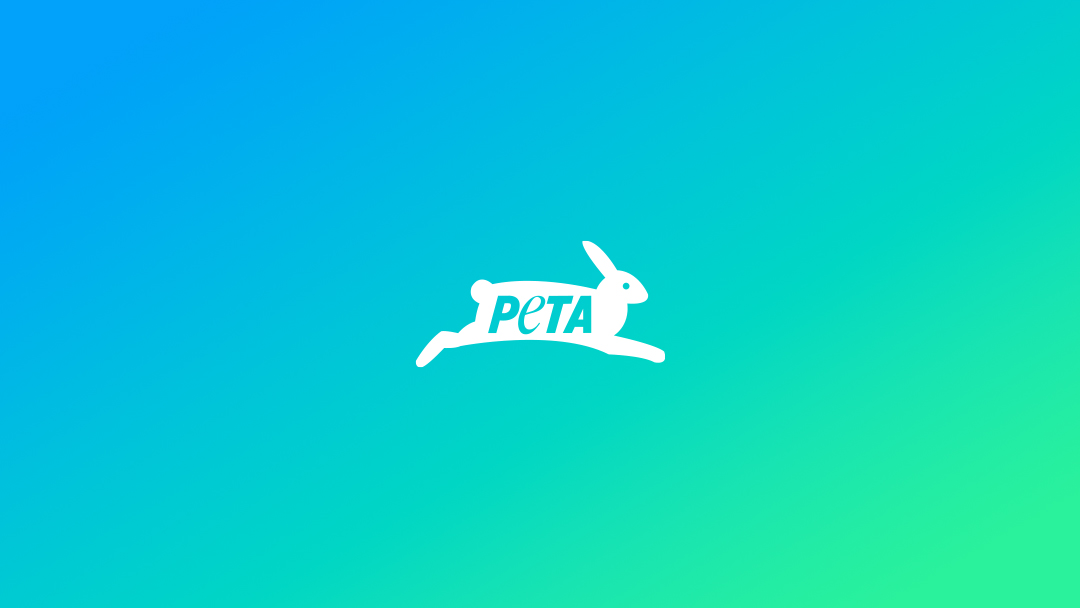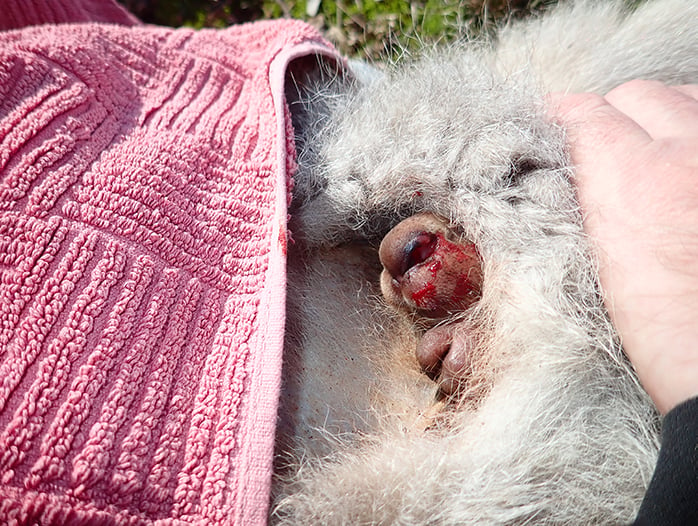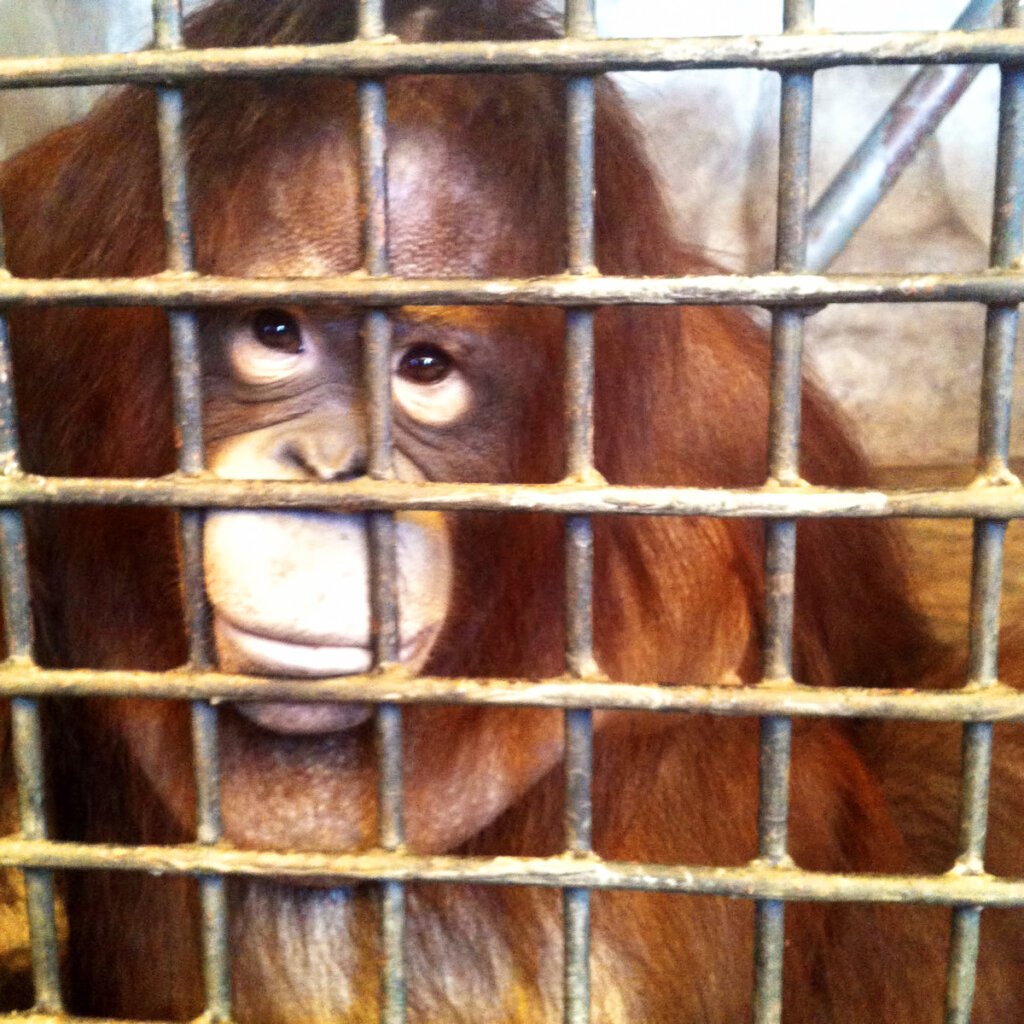
How to Remove Baby Marsupials From Their Dead Mother’s Pouch
Approximately 86,000 native animals are killed on Australian roads every year, and many of them are marsupials.
If you spot a female kangaroo or other marsupial who has been hit, it’s important to check her pouch for a baby – if it’s safe to do so.
In this guide, we offer a few tips on how to be prepared for a rescue, how to perform a rescue, and where to get help.
Carry an Animal Rescue Kit in Your Car
Include the following items*:
Essential
- Thick gloves (for handling animals)
- Blanket
- Towels
- Pillowcase (to act as a pouch)
- Torch
- Basket
- Scissors with rounded tip
- List of telephone numbers (for wildlife rescue services and veterinary clinics)
Also Helpful
- Binoculars (for checking animals from afar)
- Garbage bags (to lay under injured animals when transporting them in a car)
- Pliers and wire cutters
- Heat pads (to keep animals warm)
- First aid kit
- Surgical gloves (for checking pouches)
*This list is not exhaustive. Please see “Kangaroo Rescue Techniques and Application” for more information.

How to Check the Pouch and Rescue a Baby
- Wear high-visibility clothing (with reflector stripes), and always keep your rescue kit in an accessible spot.
- Be aware of your surroundings: are you in a particularly dangerous spot on the road, such as just around a bend?
- Try to move the mother off the road to a safer place.
- Be sure to check that the mother is deceased before attempting to remove her baby. Check for breathing, stiffness, and body warmth, and touch the corner of an eye gently to test for a blink reflex.
- Gently open the pouch and look for a joey. Sometimes, you may have to cut open the pouch. If so, do this carefully with round-tipped scissors.
- If the joey’s mouth is attached to the teat, do not try to detach them, but instead, if possible, take the deceased mother with you, or if that’s not possible, cut off the teat. Pulling the joey’s mouth off the teat can severely damage the joey’s mouth.
- Try to remove the joey gently, back-first, with the legs, tail, and head following. Be sure not to get any body parts caught. (Do not pull too firmly.)
- Cover his or her head immediately with a blanket, towel, or pillowcase to calm the animal down (and prevent the joey from scratching you or fleeing).
- You’ll need to keep the joey warm. You can do this by putting him or her in a basket with a towel-wrapped heat pack. (But do not overheat the joey.) If you don’t have a heat pack, keep the joey wrapped inside a towel and placed in the pillowcase.
- Turn off the car radio and keep the noise to a minimum so as not to frighten the joey.
- Take the joey to the nearest wildlife rescue centre, registered wildlife carer, or veterinarian immediately. Never try to keep or care for wild animals yourself. They require care from specialists.
Useful Contacts
Not sure where your local wildlife rescue centre is located? Or need some other help or advice? Try contacting these local organisations:
Australian Capital Territory
- RSPCA ACT – 1300 777 221 (business hours) or 0413 495 031 (after hours)
- ACT Wildlife– 0432 300 033 (24 hours)
- Canberra Connect (injured kangaroos) – 13 22 81
New South Wales
- Wildlife Information Rescue and Education Service – 1300 094 737
- Sydney Wildlife – 02 9413 4300
- Wildlife Rescue Operations Centre– 1300 596 457
Northern Territory
Wildcare NT – 08 8988 6121
Queensland
- RSPCA Queensland‘s wildlife emergency line – 1300 ANIMAL (1300 264 625)
- Queensland Parks and Wildlife Service – 1300 130 372
South Australia
- Fauna Rescue of South Australia Inc wildlife hotline – (08) 8289 0896 (24 hours)
- RSPCA SA – 1300 477 722
Tasmania
- Bonorong Wildlife Rescue – 0447 ANIMAL (0447 264 625) (24 hours)
- Department of Primary Industries, Parks, Water and Environment Wildlife Incidents – 1300 827 727
Victoria
Wildlife Victoria – 13000 WILDLIFE (1300 094 535)
Western Australia
Parks and Wildlife Wildcare Helpline – 08 9474 9055
Help Animals in 2025: Renew Your PETA Membership!

